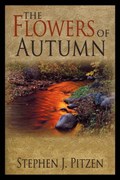In 1964 Stump was far ahead of other cognitively impaired adults. His mother had refused the demands of the school and social workers to send her son to the state institution that they kindly referred to as the State School. So Stump, then known as Carl, had grown up exposed to social skills which kept his behaviors close enough to what was considered normal, that he almost fit in. Stump’s Mother had tried to impress on him that if he couldn’t act like everyone else he would be taken away. She didn’t know it would take more than that to preserve his freedom. The Flowers of Autumn is the story of Stump, the community that he seeks anonymity in, and the forces that confront his efforts to remain invisible. Stump is a nonjudgmental observer of the people who ultimately have the power to restrict or grant him his freedom. From the quiet corner of his favorite bar or the grass covered slope of the spot he likes best in the warmth of the day, he watches people engaged in activities that are denied him. Romances, careers, freedom to make choices, or make mistakes, the options available to the cognitive elite, or what passes for that benefitted class. His life is better than that of many, a fact he has intimate knowledge of after escaping the “safety net” society casts to save people from themselves, but still he is lonely and longs for the security of acceptance. On a cold snowy night the forces of destiny take over initiating changes for Stump and to his community. The Flowers of Autumn is the story of how we treat each other when we feel justified by the belief that it is needed and it is best.

